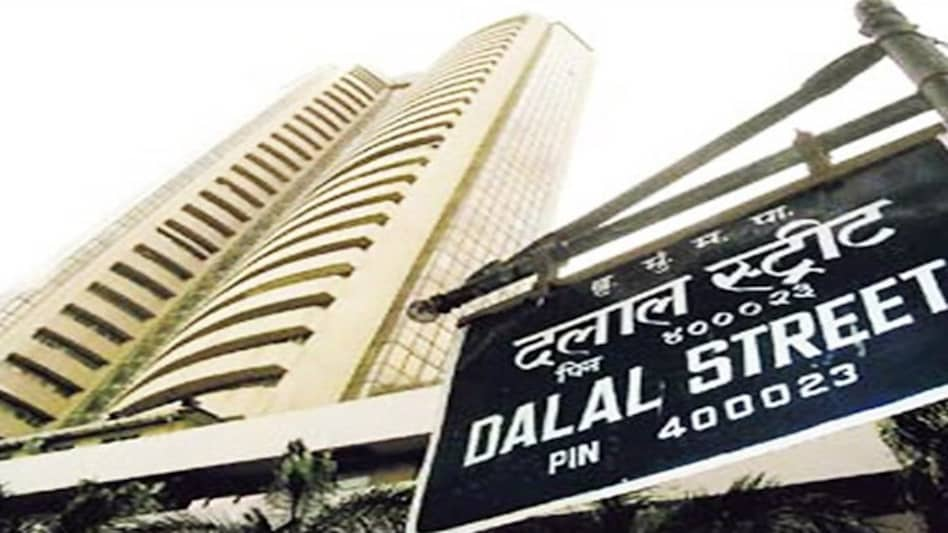 Market experts caution short-term investors from taking any calls amid rising volatility in the near term
Market experts caution short-term investors from taking any calls amid rising volatility in the near term  Market experts caution short-term investors from taking any calls amid rising volatility in the near term
Market experts caution short-term investors from taking any calls amid rising volatility in the near term After three consecutive sessions of gains, the benchmark index Sensex fell by close to 2,000 points to close at 49,099 and Nifty fell by 586 points to 14,529. It was the biggest single-day drop since May last year. The fall was triggered by a global correction led by the sharp spike in global bond yields, the US bombing Syria and rising COVID-19 cases in the country.
"The Nifty-50 & BSE Sensex are down by more than 2% this week with major cut seen on Friday. There has been a global correction led by the sharp spike in global bond yields along with a sudden increase in COVID-19 cases in a few Indian states," says Rusmik Oza, Executive Vice President and Head of Fundamental Research at Kotak Securities.
Yields on the US 10-year Treasury note eased back to 1.494% from a one-year high of 1.614% but were still up a startling 40 basis points for the month in the biggest move since 2016.
Will the stock market continue to fall? Well, technical analysts see a further downside in the near future, but fundamental analysts believe our country is standing on a strong fundamental footing to sustain any global correction due to inflation and rising bond yields.
"The recent upside bounce of the last two sessions has been negated sharply on Friday and the short-term trend has been turned down. One may expect a further slide down towards the next crucial support of around 14350-14300 levels in the coming few sessions, before showing any possibility of an upside bounce. Upside rise from here could find stiff resistance at 14,640," says Nagaraj Shetti, Technical Research Analyst, HDFC Securities.
On the contrary, Kotak Securities' Oza says, "what we are seeing in Indian markets is a knee-jerk reaction to the rise in global bond yields and as time goes India could recoup." He gives three reasons, "1) India's V-shaped recovery could be stronger than other economies because of the severe lockdown we went through last year, 2) The low base caused due to last year's lockdown will provide very high earnings growth for the next three quarters & 3) Since Pre-COVID India has added more than ~US$ 100 billion to its forex reserves. Due to the strong accumulation of reserves, RBI could be in a better position to handle any currency weakness being caused by rising bond yields and potential FPI outflows."
Also Read: Decoding the Sensex, Nifty crash: How US bond yields caused a rout in global markets
What should equity investors do?
Market experts caution short-term investors from taking any calls amid rising volatility in the near term. "With the benchmark indices breaching their immediate support levels and rising volatility, it is advisable for short-term investors not to take any fresh positions in either direction. Wait for the confirmation of the trend and let the volatility cool down," says Likhita Chepa, Senior Research Analyst at CapitalVia Global Research.
But it seems like a good investment opportunity for long-term investors. Sensex is trading at a P/E of close to 35, Nifty has a P/E of around 38, a correction can provide a feasible entry point to investors.
"New data shows that the earnings of the stocks are increasing which will bring down price-to-earnings ratio and sharp correction like this may give a good entry point. As per charts and technical levels, the market closed below its support levels of 14,550-14,600. Next support levels for the index are placed at 14,200 followed by 13800," says Nitin Shahi, Executive Director, Findoc. "Investors can start accumulating stocks for medium and long-term on correction of 4-5 per cent from current levels. Volatility is a friend of traders and many of them are finding a good time in markets," adds Shahi.
Also Read: Why RIL share rose nearly 7% in last three trading sessions
"Investors should use this opportunity to invest more in the market. India is sitting on a secular cyclical upturn, and investors should make the most of this," says Vaibhav Agrawal, CIO, Teji Mandi.
He advises investors not to get spooked by the recent market fall.
"Oil prices should normalise once the weather becomes better in the US. Oil supplies will also increase, which would help in normalising the current condition. Secondly, the current US Government wants to improve international relations as opposed to the regime under Donald Trump and thirdly, the yields should also be more benign once things normalise and the world resumes normalcy in the next few months," explains Agrawal with reasons.
Copyright©2025 Living Media India Limited. For reprint rights: Syndications Today